Though it is home to many humans, homes, and hamlets, there are many creatures that also call the Cape home. Let’s take a look at some species of 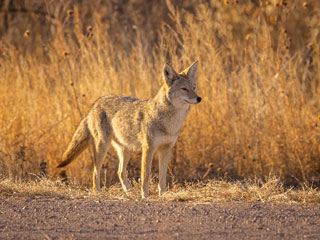 Cape Cod animals that can be found from Bourne to Provincetown! From common species like deer and raccoons to elusive species like fishers and bobcats, Cape Cod animals are wide ranging, and vary in population density. Living in such a densely settled area, these Cape Cod animals sometimes interact negatively with humans. We’ll give you some advice on how to minimize negative interactions, and the best ways to keep humans and Cape Cod animals safe and coexisting happily.
Cape Cod animals that can be found from Bourne to Provincetown! From common species like deer and raccoons to elusive species like fishers and bobcats, Cape Cod animals are wide ranging, and vary in population density. Living in such a densely settled area, these Cape Cod animals sometimes interact negatively with humans. We’ll give you some advice on how to minimize negative interactions, and the best ways to keep humans and Cape Cod animals safe and coexisting happily.
Let’s get to know some of the Cape Cod animals species:
1. Cape Cod Animal: Coyote
Coyotes on the Cape have been in the news this year due to several attacks on beachgoers. On Cape Cod, the Eastern Coyote is prevalent. Also known as the coydog, the Eastern Coyotes have wolf DNA and are larger than their western counterparts.
Like many of the wild Cape Cod animals, coyotes generally steer clear of humans. They are active at night and in the early mornings and evening hours.
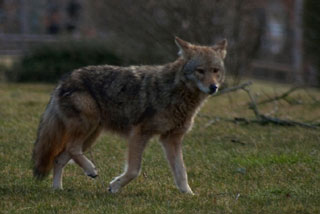 Human/Coyote interactions tend to go bad when food is involved. When people feed wild animals, either directly or by improperly disposing of food waste, the animals begin to associate humans as a food source.
Human/Coyote interactions tend to go bad when food is involved. When people feed wild animals, either directly or by improperly disposing of food waste, the animals begin to associate humans as a food source.
These animals are habituated, and become a danger to humans, and often dooms the animal itself. In many parks this is common with bears, leading to the saying, “A fed bear is a dead bear,” because of the lethal action park rangers often need to take to remove the creature.
Unfortunately, this scenario plays out with Cape Cod animal species, especially coyotes. The recent attacks on the Cape have occurred mostly on beaches, many with a history of humans feeding coyotes there previously, like Herring Cove Beach in Provincetown.
There was an incident in late July when two fishermen were able to rescue a woman who was being pursued and stalked by an aggressive coyote on Race Point Beach. The incident, caught on video, shows the coyote chasing the woman to the water’s edge, while the boat with the fishermen try to reach her.
Later on in August, a three-year-old girl was bitten on the neck by a coyote on Herring Cove Beach in Provincetown. And then in October, a Chatham teen was bitten by a coyote while eating on Harding Beach one evening. Many of the animals involved in these incidents have been shot and killed by rangers.
So, while enjoying Cape Cod beaches, be sure to use caution around wild animals, and especially be sure to not feed Cape Cod animals. The Barnstable Animal Control department warns that you should not approach coyotes, should secure your garbage, not leave pet food outdoors, and not be afraid to scare off coyotes with loud noises, bright lights, or water.
2. Cape Cod Animal: Turkey
With Thanksgiving approaching, turkeys are sure to be on the mind! Aside from their prominent role in the story of the first Thanksgiving, you can spot wild turkeys across the Cape. Wild turkeys are usually found in woodlands, and enjoy eating seeds, acorns, and buds.
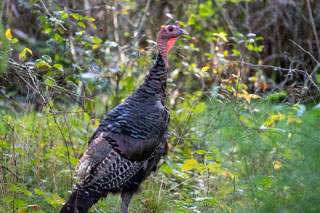 While these birds were prevalent during that first Thanksgiving, they soon began to vanish as European settlements expanded. The settlements changed the landscape, clearing forests for agricultural land, and aggressively hunting and sometimes trapping the birds. They were absent from Cape Cod by 1851 and had been nearly extirpated from the east coast.
While these birds were prevalent during that first Thanksgiving, they soon began to vanish as European settlements expanded. The settlements changed the landscape, clearing forests for agricultural land, and aggressively hunting and sometimes trapping the birds. They were absent from Cape Cod by 1851 and had been nearly extirpated from the east coast.
A population was discovered in a remote section of New York, and from that population, reintroduction efforts began in areas the species had vacated. On Cape Cod this meant the release of 28 turkeys in Wellfleet in 1995. The 5 toms and 23 hens were set free into the wild, and the Cape’s turkey population has flourished! The birds can be spotted in woodlands, lawns, and running or flying across roadways. The population of this Cape Cod animal has recovered enough to allow hunting as well.
3. Cape Cod Animal: Foxes
Massachusetts is home to two species of foxes, the Red Fox, and the Grey Fox. Red foxes are the more common of the two, with the grey 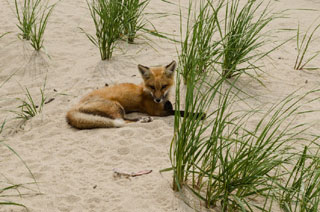 foxes being a bit more elusive. Foxes are generally nocturnal, but adults are often spotted out and about in the daylight hours in late spring and early summer when they are working to gather food for their hungry young. Foxes co-parent, with the males and females working to hunt for and care for their young.
foxes being a bit more elusive. Foxes are generally nocturnal, but adults are often spotted out and about in the daylight hours in late spring and early summer when they are working to gather food for their hungry young. Foxes co-parent, with the males and females working to hunt for and care for their young.
Foxes are omnivores, though small mammals make up a large portion of their diet. They often frequent marshes and more densely forested areas. They sometimes den under old buildings and are generally not a threat to humans. Folks with dens near their homes will certainly enjoy watching the young fox kits frolicking in the early mornings and evenings. The young are quite playful and fun to observe from a safe distance.
When they are living in areas with high human settlement, foxes can be threatened by people using rat poison. The chemical rodenticides do their job, killing rats or mice, but have rippling consequences. The dead mice are then eaten by foxes, or owls and other birds of prey, who are in turn poisoned by the rodenticides. Experts advise taking measures to deter rodents, and using traps, to avoid harming more wildlife.
4 Cape Cod Animal: Deer
Deer are prevalent on Cape Cod, with Cape Cod Wildlife Calling Guide Service estimating that population densities of this Cape Cod animal range from 6-12 deer per square mile. Their main predators on the Cape include coyotes and cars, so keep your eyes peeled for those reflective eyes while driving at night.
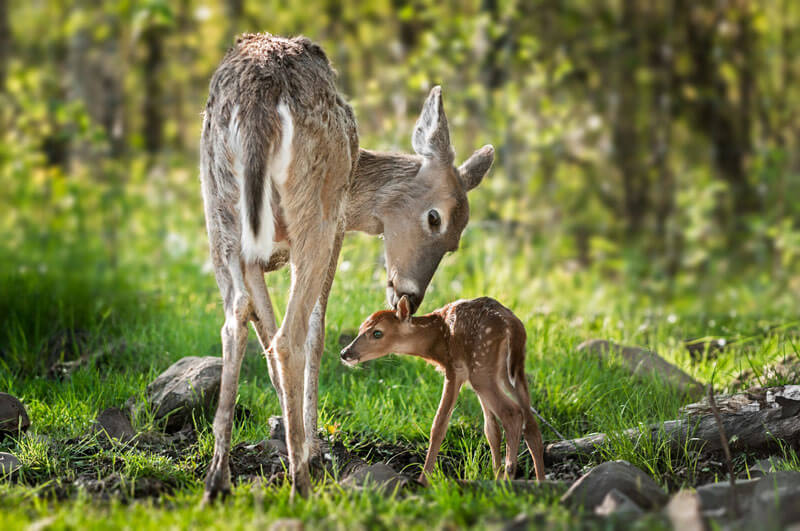
There is also hunting for deer on the Cape, so it’s important to stay informed about when and where hunting is taking place. In the fall it’s a good idea to wear blaze orange if you’re heading out into the woods, and to avoid wearing tan, brown, and white clothing that might resemble a white-tailed deer.
On Cape Cod there is hunting allowed in various locations, including fall-controlled hunts at Camp Edwards on Joint Base Cape Cod in Sandwich and Bourne. For information on permits and regulations, visit MassWildlife’s website. Hunting is also permitted in areas of the National Seashore, and on other lands across the Cape.
Wildlife biologists are on the lookout for any incursion of Chronic Wasting Disease in Massachusetts. While there have not been any cases of the disease on the Cape, which attacks the brains of deer and other ungulates, there have been cases in Connecticut and Rhode Island. Chronic Wasting Disease is contagious and causes animals to act abnormally. If you see deer acting strangely, be sure to report it to MassWildlife at (508) 389-6300.
5. Cape Cod Animal: Bats
There are eight species of bats found on Cape Cod, and in the Cape Cod National Seashore. The bats found in the Northeast are nocturnal and insectivores, meaning that they spend their 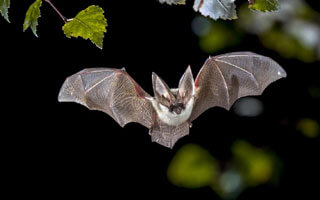 nights flying around eating lots of insects! With notoriously poor eyesight, bats navigate and find their prey using echolocation.
nights flying around eating lots of insects! With notoriously poor eyesight, bats navigate and find their prey using echolocation.
The NPS is studying and monitoring bat populations on the Cape Cod National Seashore. On Cape Cod the Big Brown Bat is the most common, with other species including the Silver Haired Bat, Hoary Bat, Eastern Red Bat, Northern Long Eared Bat, Tri Colored Bat, Eastern Small Footed Bat, and Little Brown Bat.
Of these species, the cave-hibernating bats are under threat from a new disease known as White-Nose Syndrome. The disease is decimating bat populations across the US. Of the Cape’s bats it impacts the Northern Long Eared Bat, Tri Colored Bat, Eastern Small Footed Bat, Little Brown Bat, and Big Brown Bat. All but the Big Brown Bat are listed as State Endangered species and are impacted significantly by the disease. The Northern Long Eared Bat is also a federally threatened species. The Big Brown Bats are also susceptible to White nose syndrome but have lower mortality rates according to the National Parks Service.
6. Cape Cod Animal: Raccoons
Raccoons are abundant across the Cape and are well adapted to living in a variety of environments, from remote coastlines to the middle of thickly settled neighborhoods. Their hands and feet are quite dexterous, often allowing them to break into people’s garbage,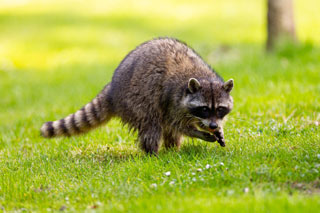 and even turn doorknobs!
and even turn doorknobs!
The species of Cape Cod animal is crepuscular, meaning it is active around dawn and dusk, as well as nocturnal, active at night. They can also sometimes be spotted during the day if food is available. Seeing a raccoon in the daytime does not immediately indicate that it’s diseased.
That being said, raccoons are often discussed, especially on the Cape, in relation to rabies. Rabies can infect humans, pets, and wildlife, and is deadly if left untreated. In July of 2021 the first case of non-bat rabies in eight years was detected in a Hyannis raccoon, leading to a renewed push to vaccinate raccoons against rabies. The project, with the aim of eliminating rabies on Cape Cod began in 1994.
The aim is to push rabies off the Cape, and to hold the line on rabies crossing the Cape Cod Canal. The program is currently vaccinating the area from Barnstable East through Orleans. The vaccine is distributed orally, using a bait that smells like fish and attracts the raccoons!
To coexist safely with racoons, be sure to secure your garbage, keep pet food indoors, give raccoons a wide berth, and report any abnormal raccoon behavior to your local animal control department.
7. Cape Cod Animal: Fishers
An elusive, yet intriguing creature, Fishers were thought to have vanished off of the Cape when the Cape Cod Canal was built. Fishers, sometimes called Fisher Cats, are the second largest weasel in Massachusetts, following the River Otter. They are one of the few 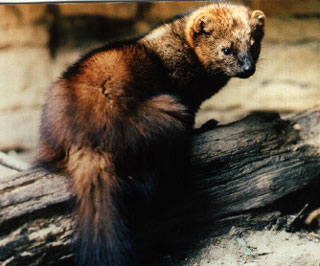 natural predators of porcupines.
natural predators of porcupines.
With their retractable claws, this elusive Cape Cod animal is a great climber and prefers to avoid humans and human settlements. The species was extirpated from southern New England by the 19th century due to forest clearing and unregulated trapping. Without their natural predator, porcupine populations boomed. The porcupines killed many of the tree seedlings planted by timber companies, chewing the bark and girdling the trees.
This led to a push to reintroduce the fishers in the 1950’s to control the porcupine populations. The Fishers are mostly carnivorous, though they will sometimes eat berries and fruit.
Many believed that they were not on the Cape, until one was spotted on a game camera in 2009. Since then, there have been some sporadic sightings, and a case of a fisher found as roadkill in Sandwich. Some have seen them along the Cape Cod Canal. Without substantial porcupine populations on the Cape, fishes will also eat other small and mid-sized mammals like squirrels, rabbits, mice, and birds.
Some attribute an otherworldly shrieking in the night to fishers, though wildlife experts suggest that these alarming noises often originate from foxes, and that the fishers are not so vocal!
8. Cape Cod Animal: Bobcat, Bear, and Beast
Over the years many Cape Cod animal sightings have not been confirmed but have become the basis for whispered rumors and urban legends. Some of these creatures have been documented by photos and videos. Many wildlife experts explain these creatures as individuals that are just passing through, having wandered across the 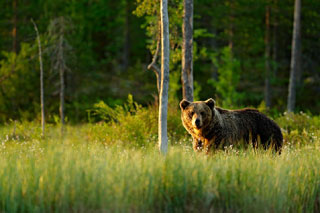 Cape Cod Canal for unknown reasons.
Cape Cod Canal for unknown reasons.
This includes the now infamous Cape Cod Bear that was spotted up and down the Cape in 2012 before being relocated to the mainland side of the canal.
Another Cape Cod rarity, a Bobcat was caught on video in August of 2013, perched on a rock wall in a North Falmouth backyard. Since then, there have been several other unconfirmed sightings of bobcats on the Cape, including a sighting at Bells Neck Reservation in Harwich, and a few recent sightings in Brewster.
Though bobcat sightings have become more common in Southern 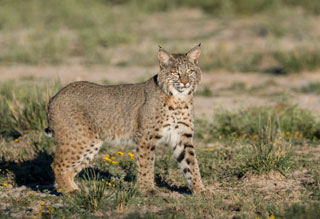 Massachusetts, with sightings in the outskirts of Boston, wildlife experts suspect it’s a few individuals, rather than a sign that bobcat populations are establishing themselves in the area. Whether it’s an individual or a sign of a growing population, the bobcats are sure to be enjoying the prevalent cottontails on the Cape, one of their primary food sources.
Massachusetts, with sightings in the outskirts of Boston, wildlife experts suspect it’s a few individuals, rather than a sign that bobcat populations are establishing themselves in the area. Whether it’s an individual or a sign of a growing population, the bobcats are sure to be enjoying the prevalent cottontails on the Cape, one of their primary food sources.
The buzz over the bobcat sightings recalled for many the rumors last surfacing in the 1980’s of the “Beast of Truro” or “Pamet Puma.” This creature was credited with the killing of pets and livestock and was the subject of much speculation. Many who saw it described it as a large cat with a “J” shaped tail that looped to the ground and back up. Many wondered if it was a mountain lion terrorizing their town, though wildlife experts thought that perhaps it was coyotes or wild dogs.
A 1982 article in the New York Times reported that the last known mountain lion in Massachusetts was killed in 1858. Still the Beast of Truro continued to run wild in dunes, whether real or rumor. There was a similar scare about the beast in the mid-19th century, with townsfolk reporting a beast lurking on the edge of farms and forests, taking livestock, and leaving paw prints in the sand.








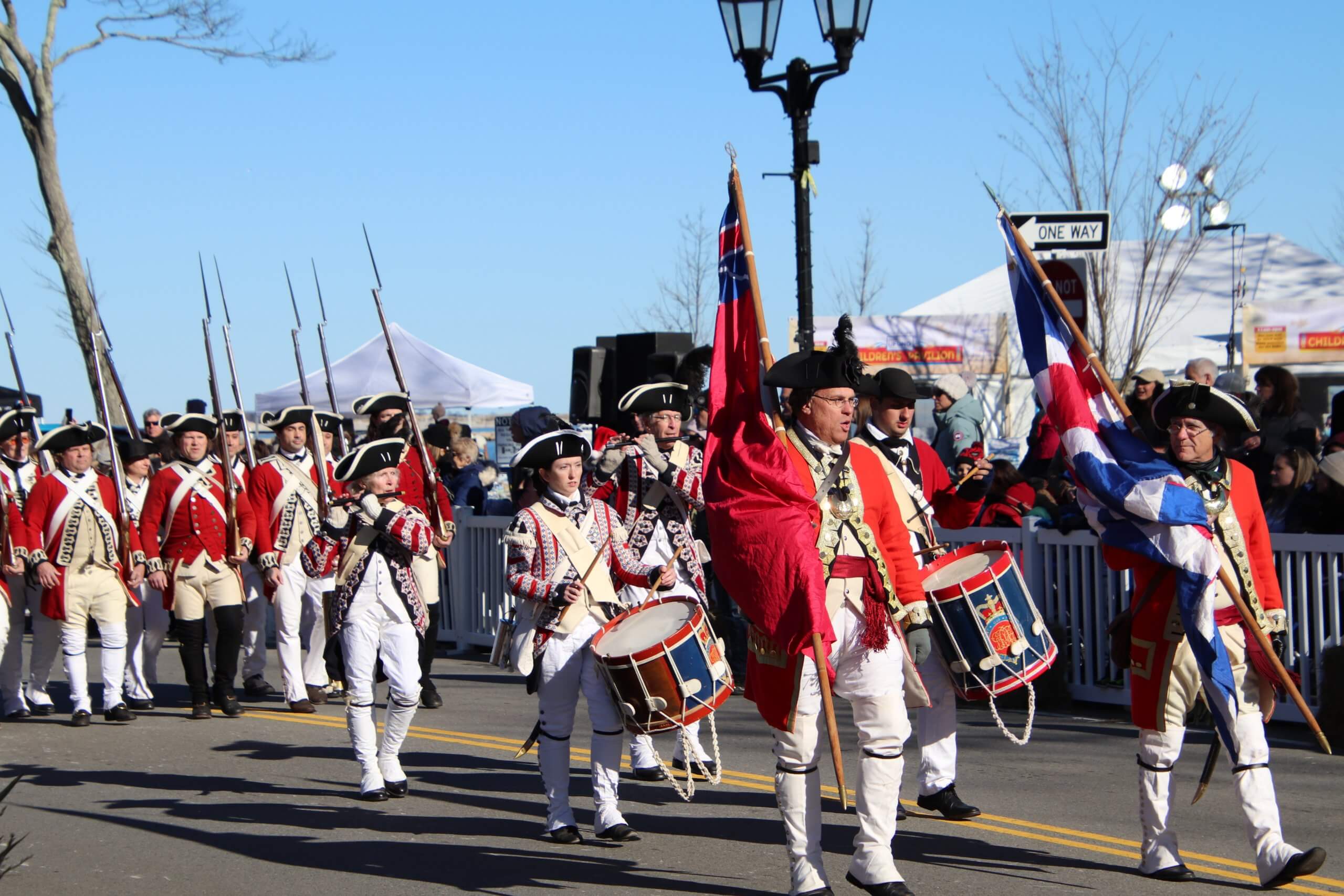

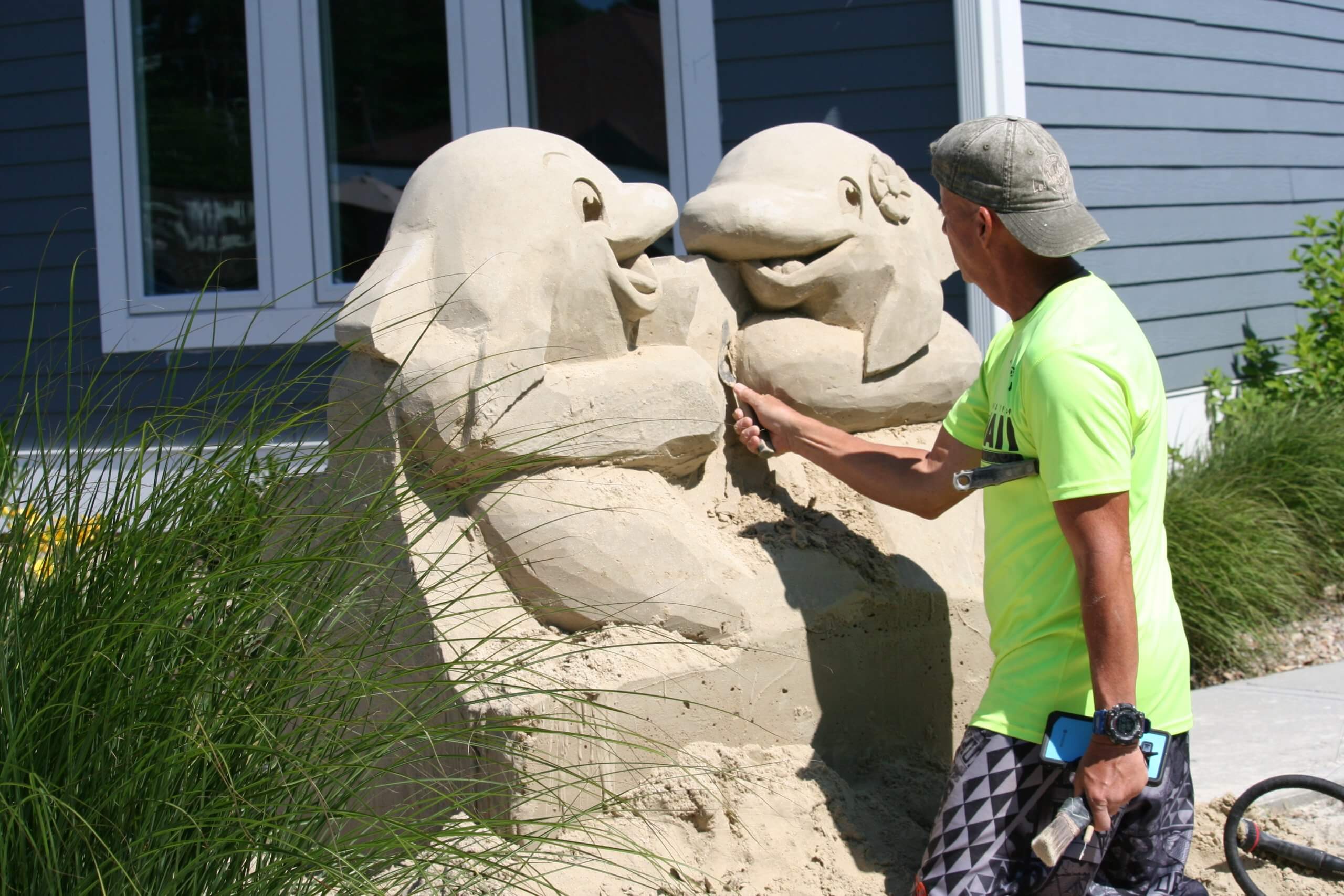

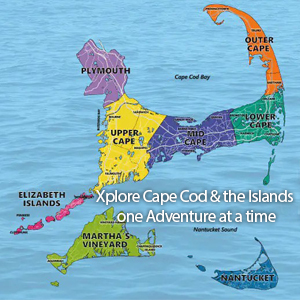
This Post Has 7 Comments
A Fisher Cat walked down our driveway, crossed the road and toward a bog. It wasn’t bothered by two adults and a large Lab.
Hi Mary, I saw one stroll by my neighborhood (100 yards from my home) in Town about a year ago, Nelson Ave!
Gail
I saw something in my yard brown coated black stub tail about the size of a raccoon small nosed
I didn’t realize there were coyotes on Cape Cod. I know it makes sense there are, but I thought it was too close to the ocean and possibly too urban for them to exist.
Yes, in fact there were several encounters with people on the beaches this summer.
Very interesting to learn about some different animals on the Cape. Great place to vacation!
Am in west falmouth and I swear a fisher just trotted through my back yard!! Broad daylight!! I see coyotes and fox all the time but the fisher was a first for me!! Was kind of bigger Than I thought they’d be! Afraid to let the dog out !